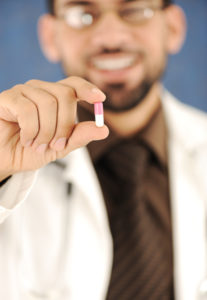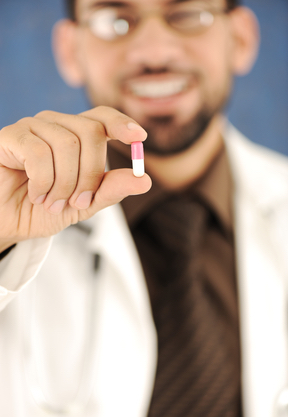
On August 18, 2015, the FDA approved flibanserin (Addyi) to treat acquired, generalized hypoactive sexual desire disorder (HSDD) in premenopausal women. If that sounds like a mouthful of medical and psychiatric techno-babble, it’s also known popularly as “pink Viagra.” Not only has there been controversy over whether or not HSDD should even be a DSM-defined disorder, now it’s “treated” by a medication that requires special warnings and regulations because of its potentially serious side effects. The FDA rejected flibanserin twice (in 2010 and 2013) as a treatment for HSDD before it was finally approved.
Writing an Op-Ed for the LA Times, Emily Nagoski, a sex educator, said she was less concerned about the risk of low blood sugar and fainting from flibanserin than she was about “the drug maker’s reinforcement of an outdated, scientifically invalid model of sexual desire.” She went on to note how the “problem” flibanserin is supposed to help women with is an absence of spontaneous, out-of-nowhere desire. She noted that research over the last 20 years has found there is another “totally legitimate” way to experience desire called responsive desire, which “emerges in response to pleasure, whereas spontaneous desire emerges in anticipation of pleasure.” Therefore the ‘disorder’ treated by flibanserin is actually “a normal, healthy variation in human sexual response,” according to Nagoski.
She also said spontaneous desire was not an essential part of sexual well-being. Most people will experience both spontaneous and responsive desire at different times in their lives. But there is some disagreement among researchers about how many people experience either kind of sexual desire. “Responsive desire isn’t worse than spontaneous desire, it’s just different.” Yet Sprout, the company that owned the patent rights to flibaserin, seemed to disregard the fact that they were treating normal, healthy women with their drug.
During an FDA hearing on the drug, one panelist noted the women in the study were averaging two or three “sexually satisfying events” per month before the trial began. So if they lacked desire, why were they having any sex, the panelist asked. A Sprout presenter explained, “Once they engage in activity, it’s pleasurable.” Nagoski commented how this was a “tidy definition of responsive desire.” Disturbingly, she also related where the FDA’s analysis of the data submitted for approval showed that only 10% of the research participants taking flibanserin experienced “at least minimal improvement.” Then 90% of those participants taking flibanserin experienced NO IMPROVEMENT!
The potential side effects from the drug are so serious that the FDA announced it was requiring special training and certification before providers could prescribe it. Addyi (flibanserin) can cause severely low blood sugar and fainting (syncope). And these risks become more severe when women drink alcohol or take certain medications that interfere with the breakdown of Addyi in the body. So drinking alcohol is contraindicated; and health care professionals are supposed to assess the likelihood of the patient reliably abstaining from alcohol while using Abbyi. It comes with a black box warning to highlight the risks of severe hypotension and fainting in patients who drink alcohol while taking Addyi.
Addyi is being approved with a risk evaluation and mitigation strategy (REMS), which includes elements to assure safe use (ETASU). The FDA is requiring this REMS because of the increased risk of severe hypotension and syncope [fainting] due to the interaction between Addyi and alcohol. The REMS requires that prescribers be certified with the REMS program by enrolling and completing training. Certified prescribers must counsel patients using a Patient-Provider Agreement Form about the increased risk of severe hypotension and syncope and about the importance of not drinking alcohol during treatment with Addyi. Additionally, pharmacies must be certified with the REMS program by enrolling and completing training. Certified pharmacies must only dispense Addyi to patients with a prescription from a certified prescriber. Additionally, pharmacists must counsel patients prior to dispensing not to drink alcohol during treatment with Addyi.
The most common side effects with Addyi are dizziness, sleepiness, nausea, fatigue insomnia and dry mouth. Given the risk of adverse events like hypotension, fainting and central nervous system depression (sleepiness and sedation), it is recommended to take Addyi at bedtime. On average, treatment with Addyi supposedly increased the number of satisfying sexual events by .5 to 1.0 additional events per month. Although about 10% more of the Addyi-treated patients reported feeling improved satisfaction in sexual events the three trials reviewed by the FDA, “Addyi has not been shown to enhance sexual performance.”
Flibanserin was originally proposed as a potential fast-acting antidepressant (here and here). Unfortunately it failed to gain approval three times. So it was repositioned as a treatment for HSDD by Sprout. Part of its attempt to gain approval for flibanserin was to initiate a marketing campaign called “Even the Score,” which claimed there was inherent sexism in the number of FDA-approved treatments for sexual dysfunction. Looking at its website, Even the Score claims “men outscore women 26 to 1 when it comes to FDA-approved treatments marketed for Sexual Dysfunction.” Writing for Mad in America, Emily Wheeler et al. noted that this claim is false. “There are only 8 drugs to treat male sexual dysfunction, and none are FDA-approved for low libido.”
Wheeler et al. described how Sprout was able to “game the system” and get Addyi (flibanserin) approved. “Not surprisingly, Sprout and its marketing tactics have come under fire.” The authors went on to note that HSDD is a classic example of “disease mongering,” creating a disease in order to promote a drug to treatment. They noted how the empirical evidence supporting the validity of HSDD was sparse; that numerous experts, clinicians and policy makers have questioned the validity of HSDD. Furthermore, one of the main assessment tools used to measure sexual dysfunction, the Female Sexual Dysfunction Index, was developed and validated with support from pharmaceutical companies.
Reporting on November 17, 2015 for Bloomberg Business, Anna Edney said in “The Female Libido Pill Is No Viagra,” that the number of Addyi prescriptions in the U.S. through November 6th totaled 227. Some 5,600 doctors were cleared by then to prescribe Addyi. Cost may have been a factor in the lack of sales. Sprout wouldn’t provide a price to Edney, but a pharmacy was selling it for $26 a pill. That is about the cost for Viagra. However, Addyi is supposed to be taken on a daily basis, meaning a monthly cost of $780.
According to an article published online by JAMA Internal Medicine on February 29, 2016, “the meaningful change caused by flibanserin is minimal.” This review found it to be at the lower end of the meaningful change reported above. Treatment resulted in an average of .5 additional satisfactory sexual events per month. “Overall, the quality of the evidence was graded as very low.” The authors said before flibanserin could be recommended in guidelines and clinical practice, future studies of women in diverse populations, particularly those with co-morbidities, medication use and surgical menopause should be done. Listen to a brief audio file where the lead author of the study, Loes Jaspers, and Steve Woloson comment on its findings.
An editorial response to that article also appeared online by JAMA Internal Medicine. The authors, Steven Woloshin and Lisa Schwartz, described the process flibanserin went through on its path to FDA approval under Sprout Pharmaceuticals. Among the interesting facts reported there, Sprout bought the rights to filbanserin from Boehringer Ingelheim in 2013 despite 2 failed efficacy trials for HSDD. It had also previously failed to be approved as a new antidepressant treatment. The strangeness of such a move is seen when considering the FDA clinical reviewers and an external advisory committee voted unanimously (11 to 0) against approving the drug to treat HSDD. Read on for a clue to why Sprout bought the drug from Boehringer Ingelheim.
In their letter, the FDA said it would require a third efficacy trial. They also requested studies to better define the interactions of filbansertin with other drugs and alcohol. In 2013, Sprout resubmitted flibanserin to the FDA for approval, along with the requested new efficacy trials and interaction studies. The alcohol interaction study was done with 23 of its 25 participants being MALE. Four of the 23 men developed hypotension, requiring further medical intervention. The FDA rejected flibanserin again in 2013. Sprout unsuccessfully appealed the FDA decision.
But in 2015, Sprout resubmitted flibanserin to the FDA and it was approved. “The Committee voted 18 to 6 for approval.” Within days, Sprout sold flibanserin to Valeant Pharmaceuticals for $1 billion. Nothing had changed with regard to the efficacy data in the interim. But the Even the Score campaign had occurred. When the FDA held a third advisory committee meeting on the drug, Even the Score members attended and testified in support of it. Woloshin and Schwartz commented:
The FDA’s own clinical reviewers, however, still recommended rejection. The 2 medical reviewers and team leader believed—as in both prior review cycles—that the benefit-harm balance was unfavorable: “We do not believe that it is reasonable for the approximately 90% of treated patients who will not respond to the product to be exposed to the numerous serious risks posed by flibanserin therapy.”
The requested alcohol studies were supposed to help assess how often hypotension and fainting occurred before approval. For men, as little as 2 drinks caused symptomatic hypotension and fainting in some trials participants. For women, although the combination could be worse, there were only TWO WOMEN in the study. The successful marketing campaign, Even the Score, meant the FDA didn’t get that information before it was pressured to approve flibanserin. There are three required postmarketing alcohol studies required, but it will take 1 to 2.5 years for those results to be known.
Within a month of the FDA approval, three of the FDA advisory committee members authored an editorial for JAMA describing a convergence of factors that led to the committee’s recommendation to approve flibanserin. Within the editorial, it was acknowledged that Even the Score was initially created through “the efforts of a consultant to flibanserin’s manufacturer who formerly directed the FDA’s Office of Women’s Health.” It also pointed to the fact that the 25-person alcohol interaction study only had 2 female participants. When flibanserin failed to demonstrate efficacy as an antidepressant, it was noticed that it was more effective than placebo in responses of the study’s participants to the question: “How strong is your sex drive?” So the drug’s development was shifted to a potential treatment for HSDD.
You can read a discussion of the editorial on Mad in America here.
The authors on the advisory committee understood that “there are few reliable estimates of the prevalence of HSDD” and that the product “is all but certain to be used off-label among a broader population of women than has been studied… many of whom may have conditions or concomitant medication use that increases the risk of adverse events.” They also point out that many of the women who were brought in for public comments to express the need for flibanserin, were not part of the population approved for the drug’s use. Because they reported “conditions that may have excluded them from on-label treatment, such as a cancer diagnosis or postmenopausal status,” they effectively reinforced concerns about dangerous off-label use.





